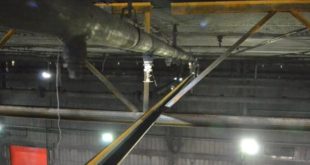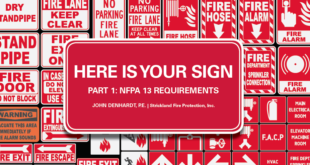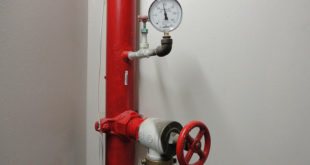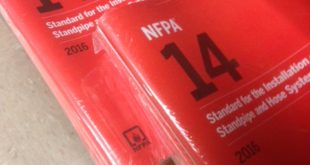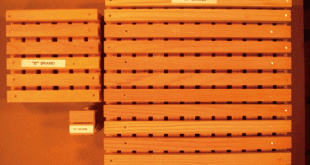The Existing Criteria is Likely Too Conservative In a continuing and extensive effort to develop reliable and effective tools and guidelines for the unique installation of early suppression fast response (ESFR) sprinklers relative to obstructions, the National Fire Protection Association (NFPA) through its Research Foundation has completed three phases of …
Read More »Here Is Your Sign
Part 1: NFPA 13 Requirements The comedian Bill Engvall made the saying “Here is your sign” well known. When Bill said it, it was directed at someone who just said something that was obvious or just plain stupid. One story I remember Bill telling at a comedy show was about a gentleman who was …
Read More »Standpipe Hydrostatic Testing
Theory vs. Practice Every industry has areas where theory and practice just don’t quite meet. The fire protection industry is no exception. If your firm is responsible for performing inspections on water-based fire protection systems, then you can relate to that statement. Honestly, trying to complete the various code inspections …
Read More »NFPA 14, 2016 Edition
The State of the Standard NFPA 14, Standard for the Installation of Standpipe and Hose Systems, has been radically revised since I first came onto the committee in the second half of the 2000 cycle. The 1996 edition contained less than one page of definitions, did not make specific provisions for high-rise buildings, and referred …
Read More »Commodity Classifications
The Fire Code and NFPA 13 Standard Don’t Match Up The International Fire Code (IFC), 2015 edition and NFPA 13, Standard for the Installation of Sprinkler Systems, 2016 edition have different lists for classifications of commodities. When the two differ, which one do you apply? This could place you in a …
Read More »AHJ Perspective: Ratings, Fire Testing and Standards – Part 5
According to my research on quotations, the phrase “A journey of 1,000 miles begins with a single step” was first uttered by the Chinese philosopher Laozi some 500 years before the beginning of the common era. We are still taking long journeys and continuing to take steps. That has been …
Read More »Ratings, Fire Testing and Standards – Part Three
Are you tired of testing yet? I hope not, because continued testing of materials and assemblies is absolutely critical to fire safety engineering. The future calls for more and more precise use of test data to support decisions that we make for approving installations. And our ability to understand the …
Read More » Sprinkler Age A Publication of the American Fire Sprinkler Association
Sprinkler Age A Publication of the American Fire Sprinkler Association
